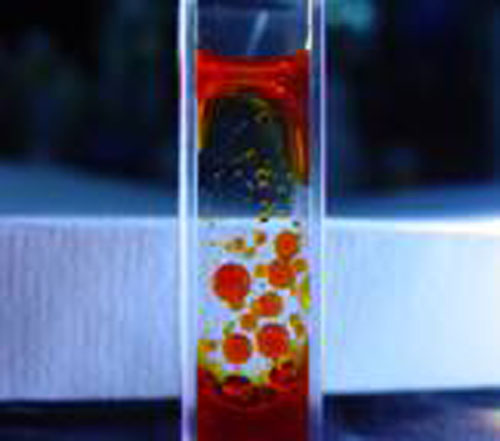Your Current Location is:Home > Research&Development
Preparation of Functionalized Ionic Liquids
Researchers from the R&D Center for Green Chemistry and catalysis of the Lanzhou Institute of Chemical Physics have successfully prepared several different functionalized ionic liquids (ILs).
First they have synthesized a new class of carborane-containing ILs based on [nido-7,8-C2B9H12] anion, by combining diether-functionalized ammonium cations. Compared with previously reported carborane-containing organic salts, the diether derivatives characteristically display lower phase transition temperature (Tg = –76 to –57℃), and four exist as liquids at room temperature due to their flexible alkoxy chains. The low-melting carborane salts not only keep the boroncluster structure of carborane compounds but also possess the special properties of ILs, which suggests their potential application in boron neutron capture therapy (BNCT) and in reducing the neutron reaction rate in the processing of nuclear reactors. TGA analysis showed that 20–70 wt% residues could be obtained after calcination at 800℃. The residues were mainly composed of B2O3 and amorphous carbon and displayed interesting structures with hollow, reticular shell morphology. The detailed report has been published in Eur. J. Inorg. Chem. (2011, 12, 1910-1920).

Transparent liquid obtained after the modification of o-Carborane and macroporous materials gained after the calcination of the liquid.(Image by DENG Youquan et al.)
Furthermore, researchers have designed and prepared six IL-modified dyes by incorporating methyl red anion ([MR]–) and methyl orange anion ([MO]–) with IL cations ([BMIm]+, [HMIm]+ and [BPy]+), based on the new concept of developing novel modified materials with ILs. Compared with MR and MO, the IL-modified dyes exhibit lower melting points and enhanced solubility, and can be used as sensitive indicators towards free proton in both aqueous and non-aqueous solutions. In detail, the IL-modified [MR]dyes exhibited better sensing performance towards the acids than MR in aqueous solution and a different indicating mechanism from MR in non-aqueous solutions, while the IL-modified [MO] dyes displayed good sensitivity towards the dissociated proton in non-aqueous systems. This work has been published in Analyst (2011, 136, 1302-1304).

Comparison of sensing performances of methyl red in aqueous solution with different pH values before and after modification.(Image by DENG Youquan et al.)
Based on previous work, they have prepared nine 1-allyl-3-alkylimidazolium ([ACnIm]) or 1-vinyl-3-alkylimidazolium ([VCnIm]) dicyanamides (DCA) with low densities. All the salts are liquids at room temperature and moisture stable. Their density, hydrophobicity/hydrophilicity and ionic conductivity can be controlled, by tuning the structure of cation. Among them, [AC8Im]DCA and [AC10Im]DCA were found to have similar densities to water, i.e. 1.007 g·cm-3 and 0.988 g·cm-3 at 25℃, respectively. Interestingly, a reversible phase reversion of the [AC8Im]DCA/H2O mixture was observed as the temperature varied. The olefin-containing compounds also have potential applications as precursors for synthesis of conducting polymeric materials. The work has been published in J. Mater. Chem. (2011, 21, 6864-6868).

A reversible phase reversion of the [AC8Im]DCA/H2O mixture as temperature varied.(Image by DENG Youquan et al.)
The work has received support from the National Natural Science Foundation of China.
Eur. J. Inorg. Chem. (2011, 12, 1910-1920) Paper
Next Article:Design of Ionic Liquid Variable Focus Lenses Based on Electrowetting